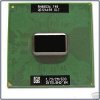everthewatcher
Forum Supporter
The original heatsink was black anodised, your new one is raw aluminium or white thermal paste, so of course your IR thermometer is showing a lower apparent temperature as it's emissivity is a lot lower.It’s running cooler than before; I have a Fluke infrared thermometer...
Does that make sense? Heat 'flows' from hot to cold. I suspect you're thinking the laser pointer does the measuring - it doesn't - or aren't taking into account the gross parallax error at close range....and it showed that the top left hand corner was the hottest (stood facing the front panel) at least as hot as the central part.
It may be the mechanical stress you put the BGA package under when removing the stock heatsink has temporarily 'fixed' a broken solder ball joint.But the proof is in the puddung: it doesn’t freeze any more.
As others have answered, it's the type of package the main chip is in - the one with the heastsink. And no, any suspect joint isn't visible without X-ray kit.What is the “BGA package”; where do I find it, and would the broken solder joint be visible?
Last edited:


